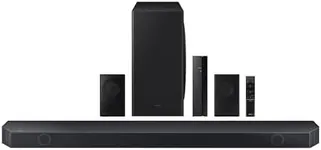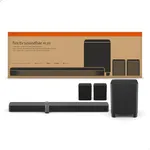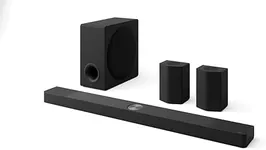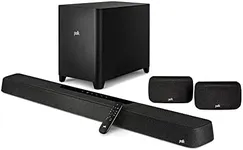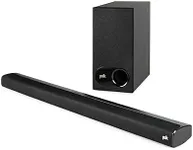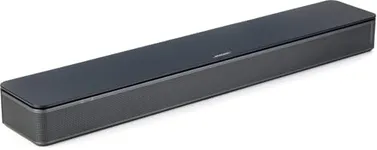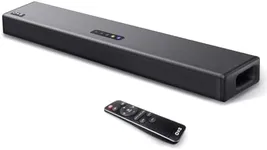Buying Guide for the Best Soundbar Homes
Choosing the right soundbar for your home can significantly enhance your audio experience, whether you're watching movies, listening to music, or playing games. A soundbar is a compact speaker system that can deliver high-quality sound without the need for a complex setup. To find the best soundbar for your needs, it's important to understand the key specifications and how they impact performance. Here are some essential specs to consider when selecting a soundbar for your home.ChannelsChannels refer to the number of separate audio outputs a soundbar has. Common configurations include 2.0, 2.1, 3.1, 5.1, and even 7.1. The first number indicates the number of main speakers, while the second number indicates the presence of a subwoofer. More channels generally mean a more immersive sound experience. For basic TV watching, a 2.0 or 2.1 soundbar might suffice. For a more cinematic experience, consider a 5.1 or higher system, which includes rear speakers for surround sound.
Power Output (Wattage)Power output, measured in watts, indicates the soundbar's ability to produce loud and clear audio. Higher wattage generally means more powerful sound. For small to medium-sized rooms, a soundbar with 100-300 watts should be adequate. For larger rooms or if you prefer louder volumes, look for soundbars with 300 watts or more. Consider your room size and how loud you like your audio when choosing the power output.
Connectivity OptionsConnectivity options determine how you can connect your soundbar to other devices. Common options include HDMI ARC, optical input, Bluetooth, and Wi-Fi. HDMI ARC provides the best audio quality and allows for easy control with your TV remote. Optical input is also good for high-quality sound. Bluetooth and Wi-Fi enable wireless streaming from your phone or other devices. Choose a soundbar with the connectivity options that match your existing devices and how you plan to use it.
Sound ModesSound modes are preset audio settings that optimize the soundbar's performance for different types of content, such as movies, music, sports, or dialogue. These modes can enhance your listening experience by adjusting the sound profile to suit the content. If you watch a variety of content, look for a soundbar with multiple sound modes. This feature can be particularly useful if you have specific preferences for how you like your audio to sound.
Size and DesignThe size and design of a soundbar can affect both its performance and how well it fits into your home. Larger soundbars often provide better sound quality due to more space for speakers, but they need to fit comfortably in your setup. Consider the width of your TV and the available space where you plan to place the soundbar. Additionally, think about the design and whether it matches your home decor. A sleek, well-designed soundbar can complement your living space while delivering great audio.
SubwooferA subwoofer is a speaker designed to reproduce low-frequency sounds, adding depth and richness to your audio. Some soundbars come with a built-in subwoofer, while others include a separate, often wireless, subwoofer. If you enjoy bass-heavy music or want to feel the rumble of explosions in movies, a soundbar with a subwoofer is essential. For smaller spaces, a built-in subwoofer might be sufficient, but for a more powerful bass experience, consider a soundbar with a separate subwoofer.
Voice ControlVoice control allows you to operate your soundbar using voice commands through virtual assistants like Amazon Alexa, Google Assistant, or Apple's Siri. This feature can add convenience, especially if you already use smart home devices. If you value hands-free control and integration with other smart devices, look for a soundbar with built-in voice control capabilities. This can make it easier to adjust volume, change inputs, or play specific content without needing a remote.
